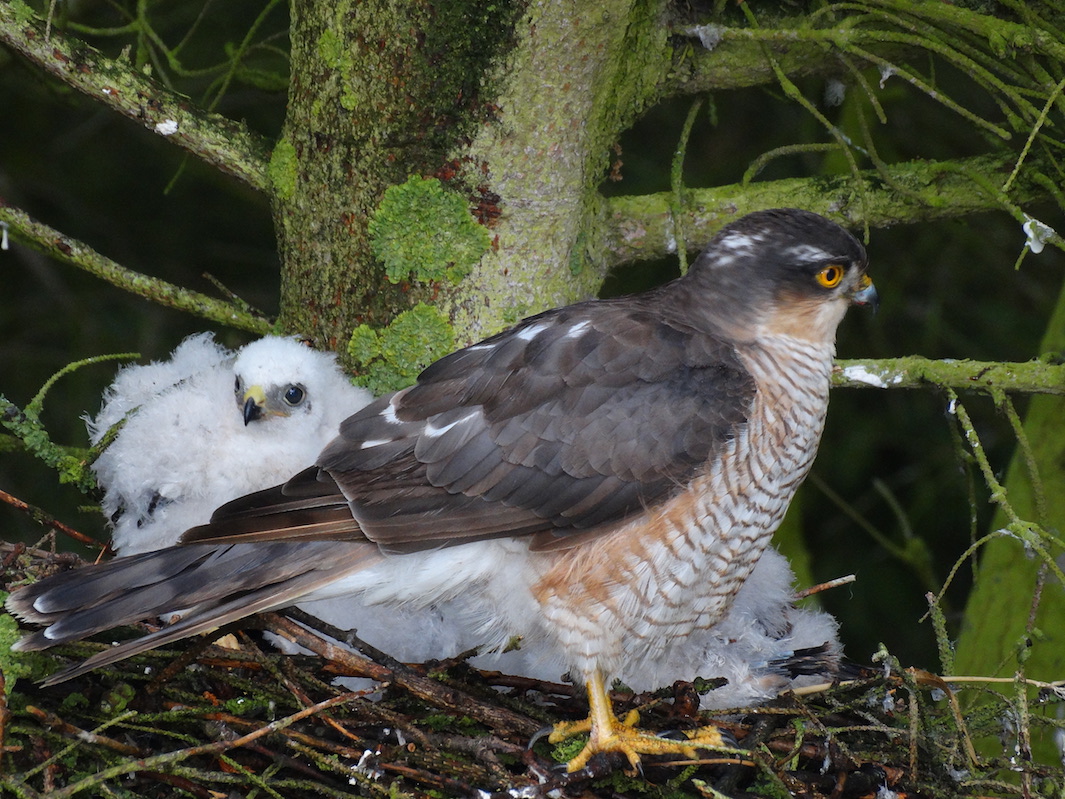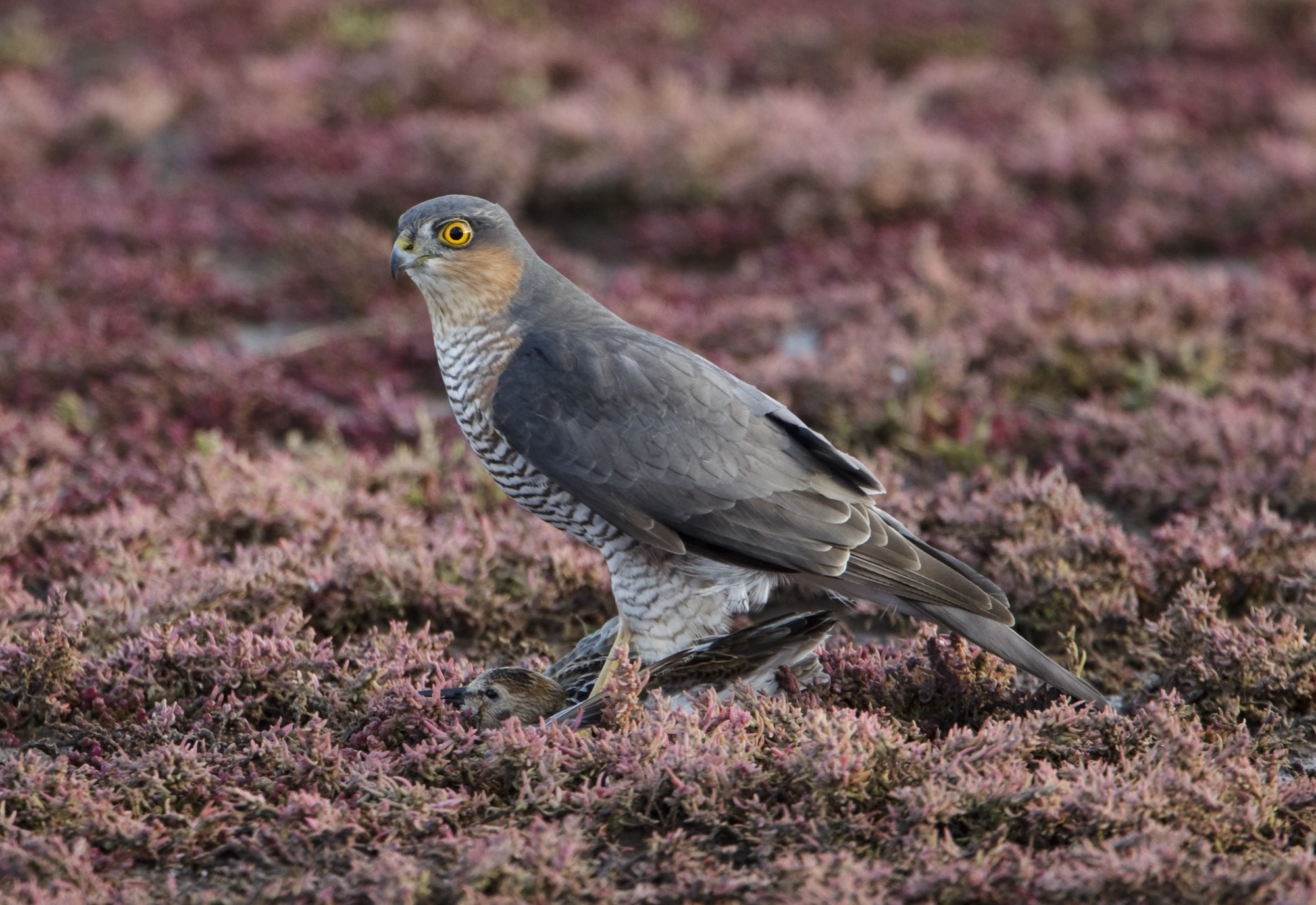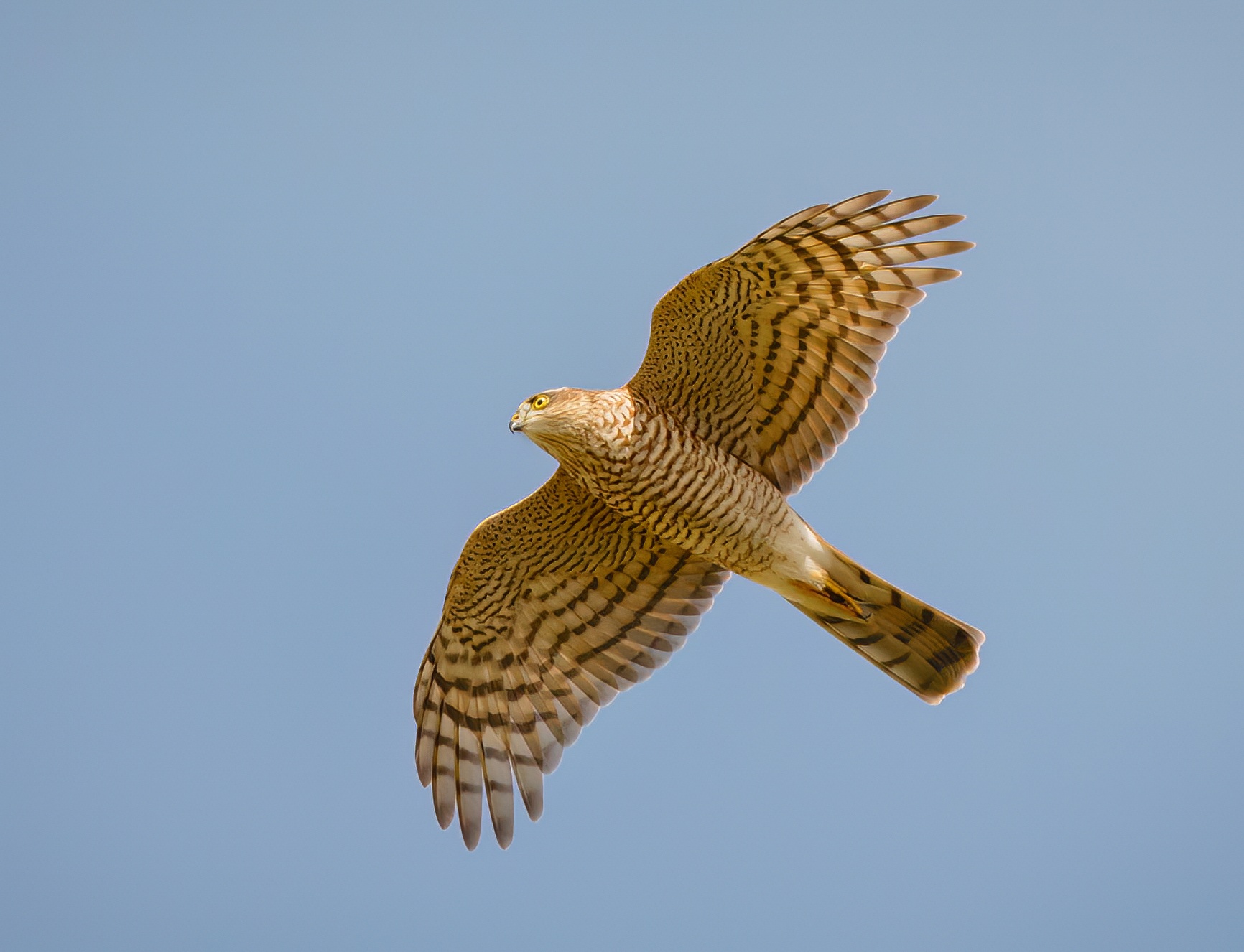Eurasian Sparrowhawk Accipiter nisus
Common resident and passage migrant. After extinction as a breeder in 1950s, due to pesticides and persecution, recolonised rapidly from the early 1980s.



Eurasian Sparrowhawk over Covenham Reservoir August 23rd 2016; photograph courtesy of John Clarkson.
The Eurasian Sparrowhawk population in the county crashed 1955-57 following the introduction of new organochlorine pesticides, DDT and the cyclodienes including aldrin and dieldrin and their derivatives, used as seed dressings. It should be noted that DDT/DDE were discovered reduce reproductive output by causing eggshell thinning, but the cyclodienes are much more directly toxic to birds and other vertebrates (Greenwood 2021).
The return of the Eurasian Sparrowhawk as a Lincolnshire breeding bird after almost 30 years as a scarce visitor was one of the great success stories of the late 20th and early 21st centuries. In 1987 there were still only breeding records from 16 sites but just five years later the LBR reported it had become a widespread breeding bird again (although no counts were made). Numbers appeared to continue to increase to at least 2010 with pairs breeding within large urban areas, in large gardens and isolated copses in open farmland but there may have been a small decrease in the last ten years. An estimated 250-300 pairs were noted in the Lincolnshire Bird Atlas at the end of the 1980s and the same publication suggested a doubling of this figure by 2000. It is likely that there are now at least 1,500 pairs in the county and probably 2,000. When nesting they can be very secretive and may easily be overlooked. Coastal migration takes place in spring and autumn with recoveries of birds ringed in the county from Scandinavia and the Low Countries recorded, along with birds ringed in those countries reovered here as well. Winter roosts of up to five birds have been recorded but this behaviour is seldom documented.
